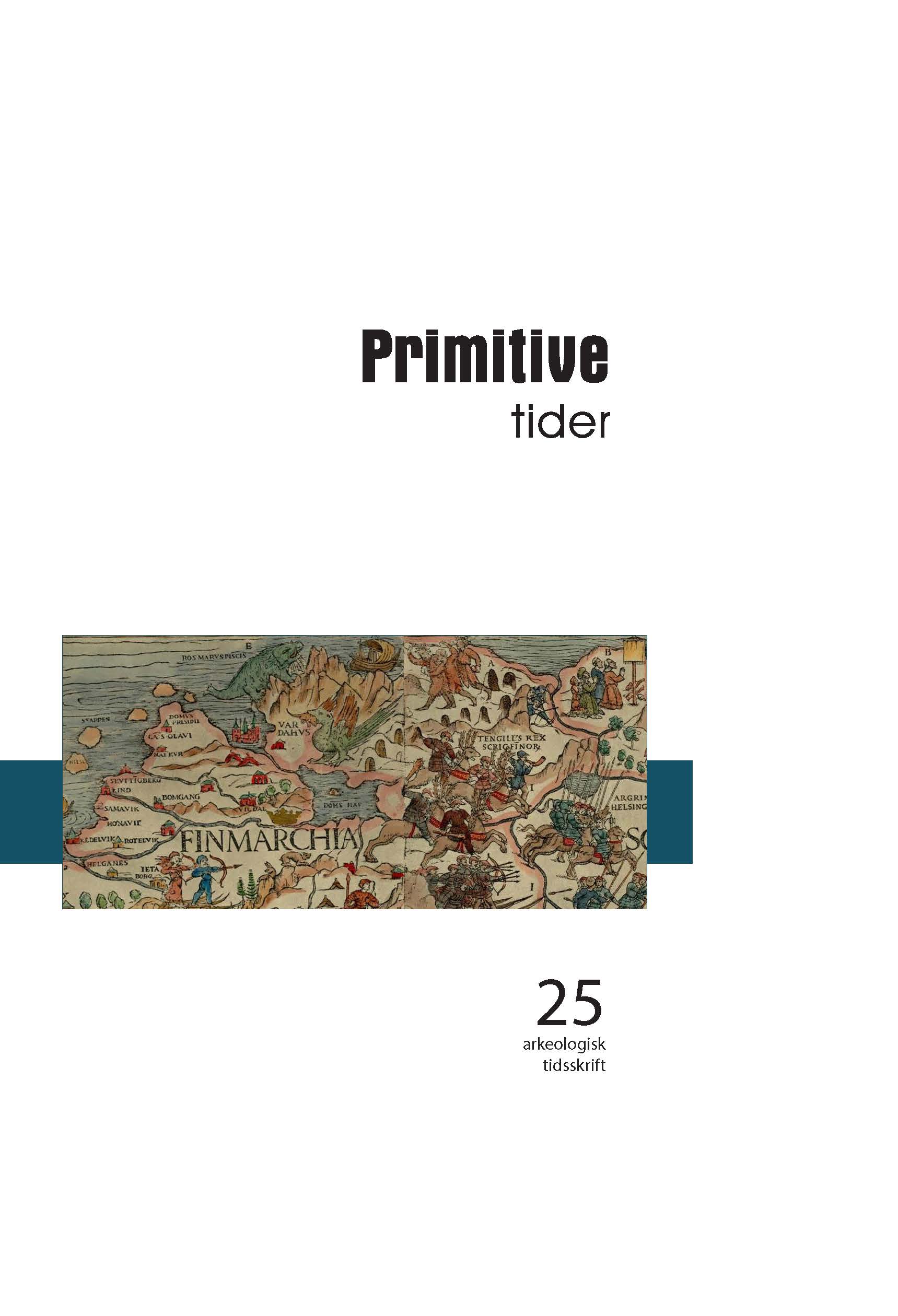Jakten på Varangermarkedet
Søk etter flerkulturelle møter i et samisk landskap
DOI:
https://doi.org/10.5617/pt.10825Abstract
Based on historical, toponymic, and archaeological sources, we believe to have identified the location of the older Varanger market, which was a crucial meeting point in inner Varanger for Saami groups and tradesmen from Norway, Russia, and Sweden from at least 1530 to the closing of the market in 1760. A large river plain southeast of mountain Márkanoaivi (“the Market Hill”) by Karlebotn/Stuorravuonna, was surveyed with metal detector and visual inspection. This resulted in the discovery of 15–16 turf hut foundations, including a very large one that may be the remains of a so-called “King’s hut” that is mentioned in the written sources. “King’s huts” were used by the authorities for tax collection, court assemblies, and church services, often while markets were held. Only a small number of detector signals were excavated, but the finds included two coins from the late 17th and early 18th centuries and a lead seal, neither of which are common find categories in ordinary North Sámi settlement contexts. Surveys and metal detecting were subsequently performed
in several areas that have been hypothesised to be thelocation of the old Varanger market, as well as in areas with similar topography as the river plain beneath Márkanoaivi. The surveys yielded interesting information about landscape use, but none of them resulted in signals or finds of the same character as by Márkanoaivi. Although we cannot prove continuity, an early 15th century radiocarbon dating at the river plain and the recorded amount of activity, suggest that the marketplace may have been located here from the 15th century until it was discontinued in 1760. The geographical location, topography, and relative uselessness of this area for other purposes, suggest that local Sámi groups influenced where the trade meeting could take place. Confirmation of this and a deeper understanding of the site depend on further
archaeological investigations. The project exemplifies how the use of metal detecting can be a non-invasive way to map activities in a landscape where most of the terrain is uncultivated land. This gives reason to rethink the use of metal detectors in this type of context.
Downloads
Published
Issue
Section
License
Articles from 2021 is licensed under the Creative Commons Attribution 4.0 International.
© CC BY-NC (2014–2020)
Articles between 2014 and 2020 is licensed under the Creative Commons Attribution-NonCommercial 4.0 International.
© Author(s) (1998–2013)
Articles between 1999 and 2013 is protected by copyright law. Without explicit authorisation, reproduction is only allowed in so far as it is permitted by law or by agreement with a collecting society.


